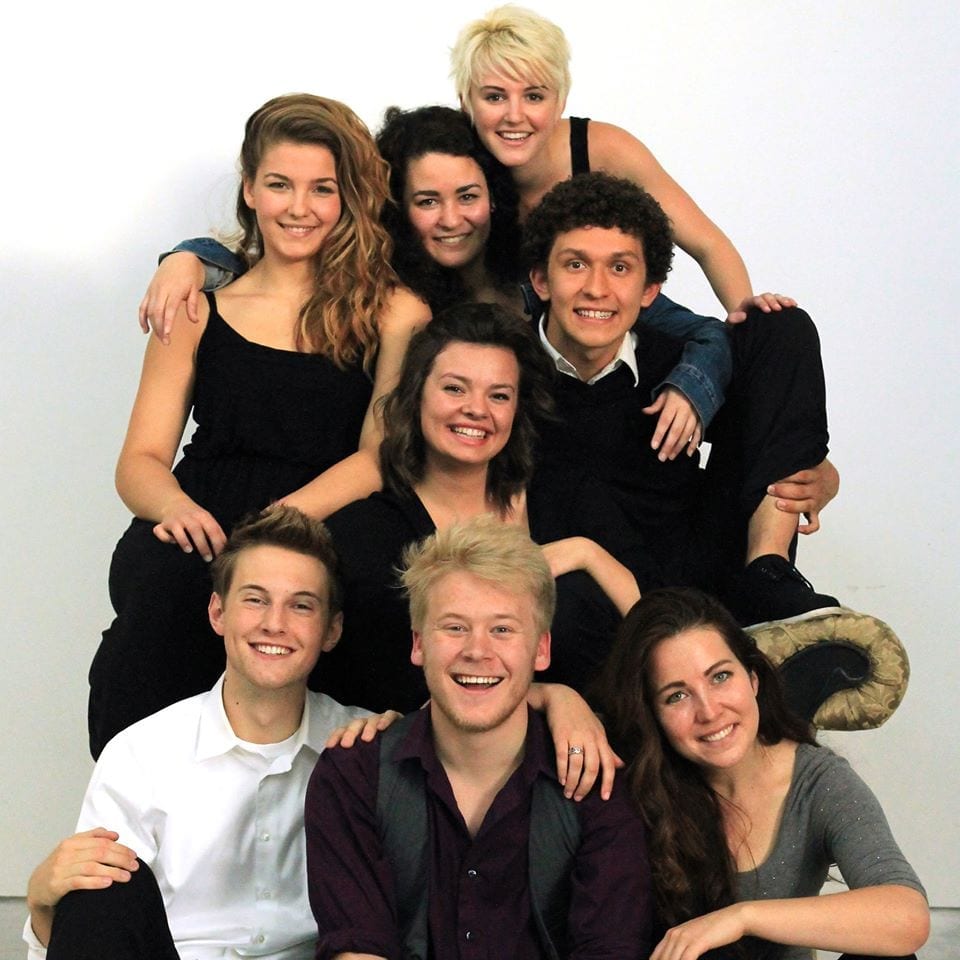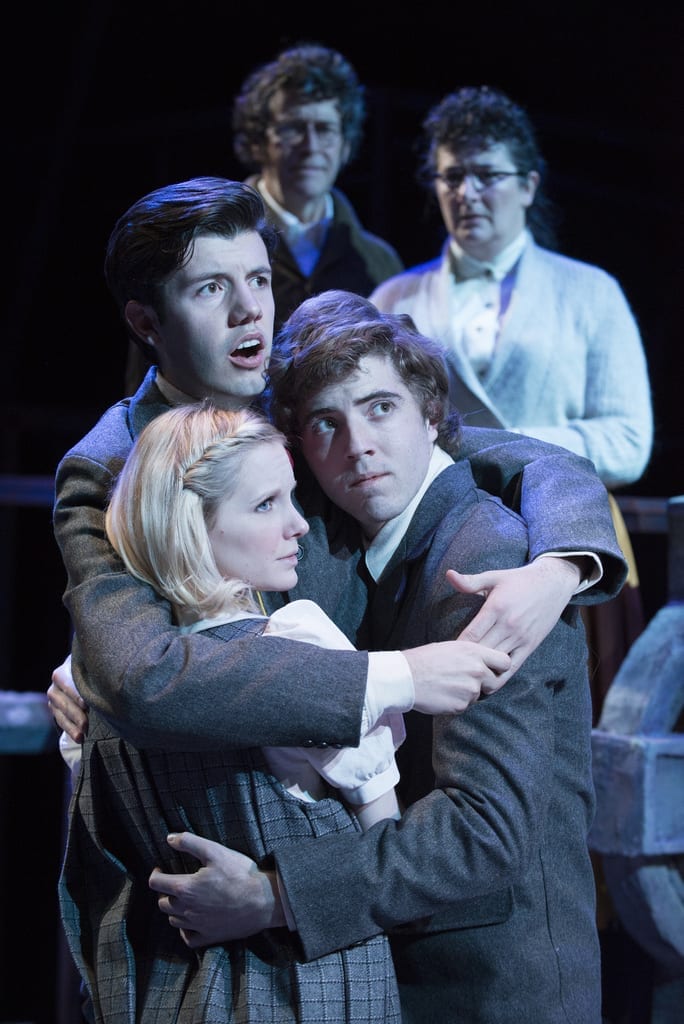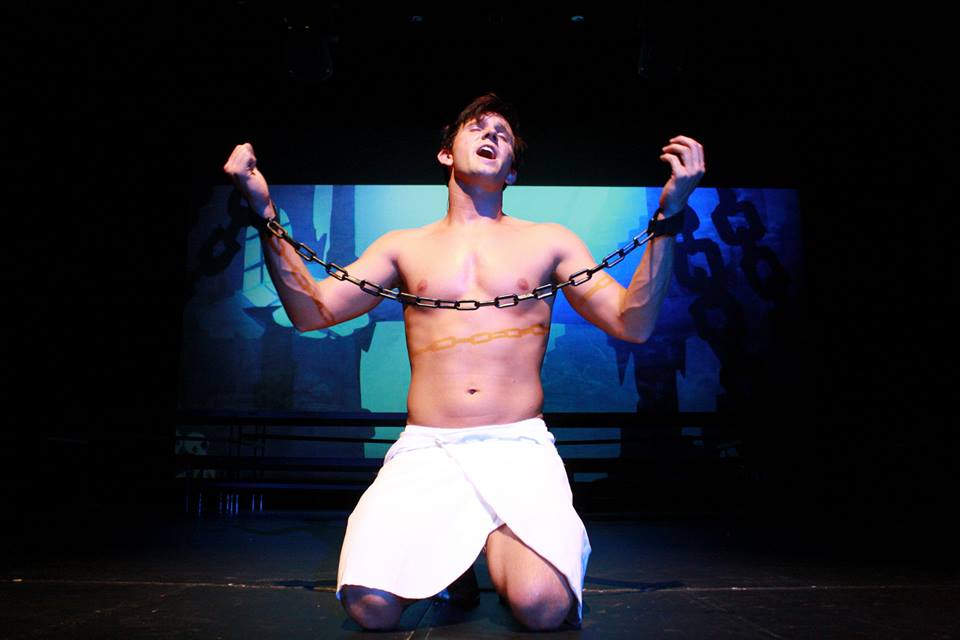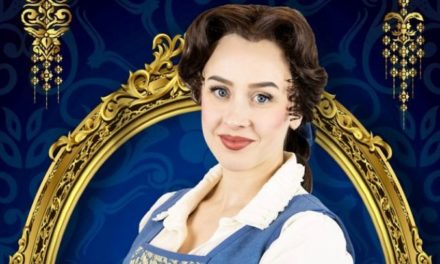SALT LAKE CITY – The Great Salt Lake Fringe festival is an event meant to showcase performances of new and experimental works that might not otherwise be seen. The four-day festival will have seen over one hundred live performances from local individual artists and up and coming producing companies. One of these is Company of Cohorts, a new group composed of young artists working as an ensemble with the mission of “encouraging original and unique theatrical pieces.” Company of Cohorts’s entry in the Fringe is Strangers, Lovers, Family, Friends, a collection of four one acts intended to explore the definitive relationships of life. All four pieces are written by Company of Cohorts artistic director Max Huftalin.

Cj Strong, Suni Gigliotti, Merry Magee, Manda Corbett, Max Cedar Huftalin, Amy Ware, Trayven Call and Hannah Minshew.
The performance opens with “Bottled,” directed by Huftalin and featuring company members Woody Minshew, Amy Ware, Hannah Minshew, Trayven Call, and Suni Gigliotti as college students locked in a basement classroom after hours and the tensions that arise from prolonged proximity to other humans. It is an engaging enough premise and the performers are all competent, but it did not have a complete arc and the characters were fairly stock. One character actually made a perfunctory Breakfast Club reference. I wanted more of a resolution after what felt like an unnecessarily long period of the actors establishing characters through pantomime before the actual performance began. After almost four minutes of watching the actors silently interact in half light, the stage manager finally introduced the rules for the evening. Each play will begin at the sound of the gong, positive heckling is encouraged, and fun should be had. I was open to possibilities, but I could have done without the forced moments of interest pre-show. “Bottled” was pleasant, but nothing too different from the after-school specials it vaguely mocked.
“Third Person Limited” directed by Trayven Call featured Merry Magee as Natalie and Huftalin as Nathan in a Stranger Than Fiction-style bit of existentialism. Natalie is Nathan’s narrator, an otherworldly being responsible for telling all of Nathan’s story at all times. The twist is that Nathan can unexpectedly see Natalie and neither is sure how to proceed. The convention of this piece is clever, and Magee admirably narrates almost the entire scene believably in third person limited style. Huftalin shows comedic ability and he and Magee are a very appealing duo. However, the convention is inconsistent and the outcome is predictable.
“Rock and a Hard Place” directed by Hannah Minshew is the most polished of the four pieces. Best man Lucca (CJ Strong) and Maid of honor Kelly (Manda Corbett) sneak off for some illicit fun and inadvertently discover that groom Ryan (Trayven Call) might be jumping ship. Cue slap-stick antics and consistently interrupted intimate moments. Strong and Corbett have dynamic chemistry together, and the text paints a complete picture of who these characters are. While watching Kelly and Lucca scramble to ensure Ryan’s attendance at the imminent ceremony, the audience experiences a “slice of life” from these characters’ perspective. Director Minshew effectively combined a classic rom-com situation with farcical elements while helping her actors maintain believability.
“Big Day for the Byrons” directed by Merry Magee and Trayven Call ends the performance. Ware, Hannah Minshew, Strong, Huftalin, and Gigliotti are the Byron clan, reeling from the funeral of the family patriarch earlier in the day and now indulging in a game of poker and exposing each other’s secrets. Minshew is Elizabeth, the uptight eldest sister who can’t help but fight with Ware’s “outrageous and shocking” baby sister Joan. Gigliotti is responsible middle sister Catherine, who has a big announcement to make (with help from Corbett). Strong is baby brother Fitz (Joan’s twin), who is doomed to ennui after a breakup early in the piece, and Huftalin is snarky middle brother Kipling–quick with a punchline but ineffably likable. There are tears, there are revelations, long held resentment freed, and phalli mimed. It’s a fun scene, but not exactly new ground. It also lacked the tension that should be there after a funeral. The death seemed a mere excuse to get these characters in the same room to conflict with each other, making it shallow rather than the nuanced story it seemed meant to portray.
The transitions were energetic, effectively using minimal sets to transform the space, and the ensemble worked with and off each other well. It is clear that they are enjoying themselves and the stories they are telling. I saw a great deal of talent and potential within this performance. But, there were the classic trappings of “student” work: over-gesticulation, trite themes and familiar plots, “shocking” material that didn’t feed the story, blatant “acting”–yet there was fun and a certain effervescence that promises big and bold things to come.





